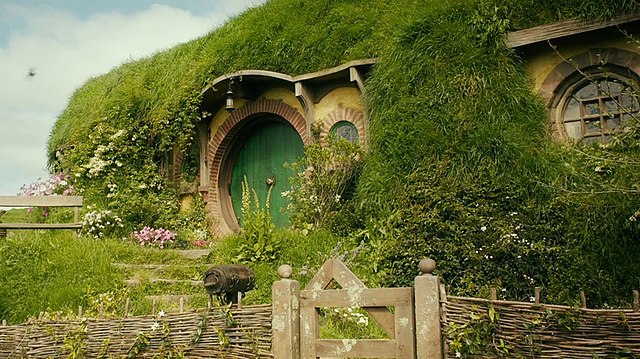In J. R. R. Tolkien's fictional world of Middle-earth, Mordor is the realm and base of the evil Sauron. It lay to the east of Gondor and the great river Anduin, and to the south of Mirkwood. Mount Doom, a volcano in Mordor, was the goal of the Fellowship of the Ring in the quest to destroy the One Ring. Mordor was surrounded by three mountain ranges, to the north, the west, and the south. These both protected the land from invasion and kept those living in Mordor from escaping.
Tolkien identified the volcano of Stromboli off Sicily with Mount Doom.
Mount Ngauruhoe was Peter Jackson's inspiration for the Mount Doom in his films.
Frodo and Sam guided by Gollum through the Dead Marshes. Scraperboard illustration by Alexander Korotich, 1984
Tolkien's descriptions of the Dead Marshes and the grim Morgai have been compared to the Beowulf poet's account of Grendel's dangerous moors. 1908 illustration by Joseph Ratcliffe Skelton
Middle-earth is the setting of much of the English writer J. R. R. Tolkien's fantasy. The term is equivalent to the Miðgarðr of Norse mythology and Middangeard in Old English works, including Beowulf. Middle-earth is the human-inhabited world, that is, the central continent of the Earth, in Tolkien's imagined mythological past. Tolkien's most widely read works, The Hobbit and The Lord of the Rings, are set entirely in Middle-earth. "Middle-earth" has also become a short-hand term for Tolkien's legendarium, his large body of fantasy writings, and for the entirety of his fictional world.
A detail of Middle-earth in one of Peter Jackson's film sets
Medieval Christian cosmology: heaven above, earth in the middle, hell below. Vank Cathedral, Isfahan.






